|
|
| ASSISI |
Assisi
represents an ensemble of masterpieces of human creative
genius, such as the Basilica of San Francesco, which have
made it a fundamental reference for art history in Europe
and in the world. The interchange of artistic (Giotto
and also contains work by Cimabue) and spiritual message
of the Franciscan Order has significantly contributed
to developments in art and architecture in the world.
The Holy City for the Christians, is a destination for
those who want to see the places where Saint Francis was
born, was active, and where, near the Porziuncola, he
died on October 4th, 1226.
http://www.assisionline.com
|
 |
| PERUGIA |
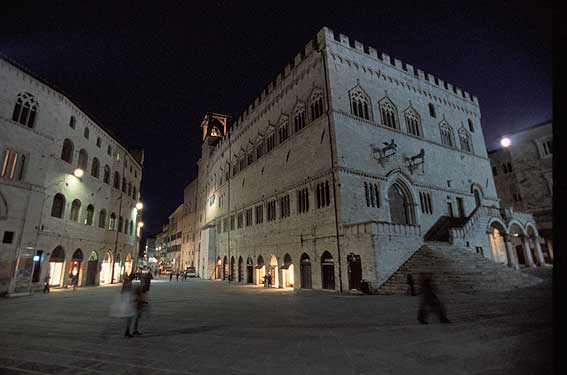 |
Its history goes back to the ninth
century BC. Perugia is in the center of Italy and is
the capital of the region of Umbria.
Perugia is a very cosmopolitan city and home to two
universities. It hosts a world-famous jazz festival,
Umbria Jazz, in the summer and its University for Foreigners
is a great place to learn Italian. It's a walled city
on a hilltop with great views over the valley and has
several important monuments and a good central square.
Home to the famous Baci chocolates, is often called
the Chocolate City. Perugia also has the world's first
hotel dedicated to chocolate, the Hotel di Perugia Etruscan
Chocohotel. Of course, Perugia has much more to offer
than just chocolate with history going back to the ninth
century BC. Today Perugia, the capital of Umbria, is
a lively walled hilltown with plenty of modern culture
making a good base for central Italy travel.
http://www.bellaumbria.net/Perugia/home_eng.htm
|
| TRASIMENO LAKE |
The
Lake Trasimeno is in the centre of one of the most important
historical, artistic, and cultural areas of Italy, with
a wealth of its own local traditions. The vast majority
of ancient and medieval art, most of the Renaissance and
Baroque art, are within two-hours travelling distance.
All of which are fundamental to modern and contemporary
artists. Not to forget archaeological sites of primary
importance, unique monuments, historical commemorations,
ancient traditions still in practice today and festivals
of international importance. |
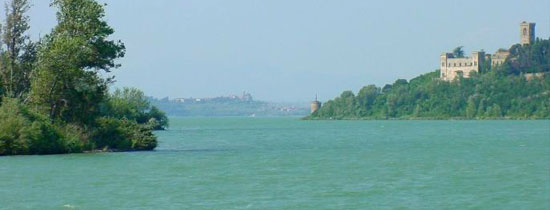 |
| GUBBIO |
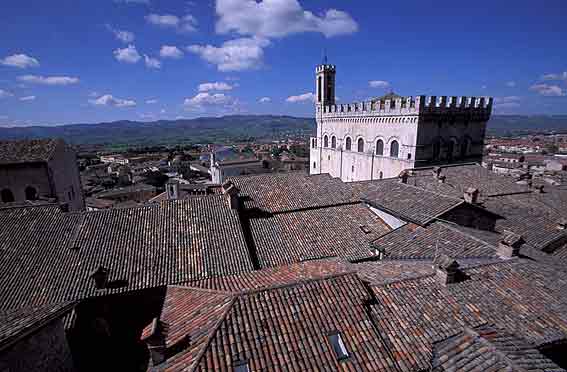 |
This city was founded by the Etruscans
between the Ist and the IInd century BC with the name
of Ikuvium nearby Mt Ingino. When the Romans came, the
name changed into Iguvium and at the end of the Roman
Empire there was the barbaric invasion. During the XI
century the city improved its urban development, with
palaces, aqueducts and facing the league of the nearby
cities. In 1384 the city passed to the power of Montefeltro
family of Urbino defeating the Gabrielli family. At
the beginning of the XVII century Gubbio was included
in the Papal State until it was annexed to the Kingdom
of Italy (1860).
http://www.bellaumbria.net/Gubbio/home_eng.htm
|
| ORVIETO - The Etruscan Town. |
Orvieto is situated on the valley of
the Paglia river. It was an important Etruscan centre
with the name of "Volsinii Veters". The Etruscans
established there also a sacred place for all people of
their region Etruria called "Fanum Volumnae".
In Roman times it was a prosperous centre for its production
of ceramics. It was also dominated by several invasions.
In XI-XII century Orvieto became a free common with wonderful
buildings like towers, palaces and noble houses. In 1354
it became a city of the Church Estate until 1798. After
a brief Napoleonic domination, it was annexed to the Kingdom
of Italy in 1860.
http://www.bellaumbria.net/Orvieto/home_eng.htm |
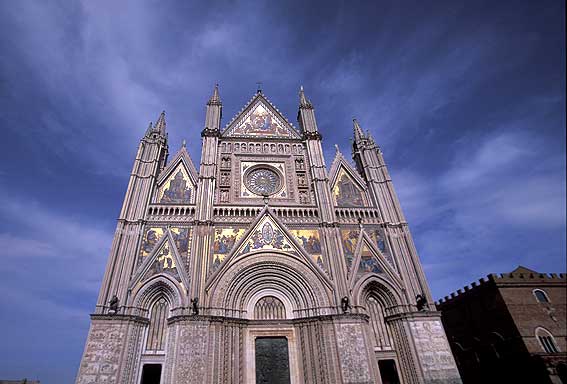 |
| TODI |
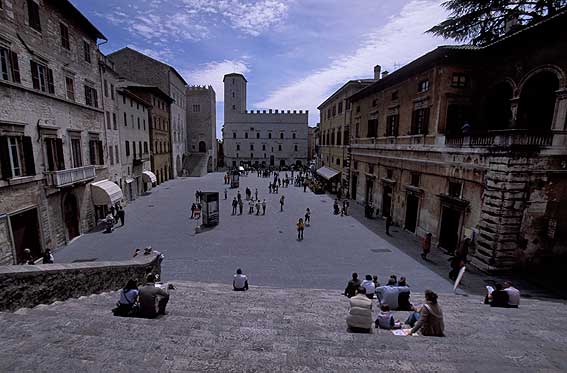 |
Todi is a gracious medieval city with
antique origins in the heart of the Umbrian valley halfway
between Rome and Florence. It stands upon a hilltop,
overlooking the Tevere River. The bustling piazza, where
residents do their daily shopping and take their morning
coffee, is the hub of the city’s civil, economic,
and social life. Filled with open-air cafés and
art, antique, and clothing stores, the piazza is a great
meeting place for residents and tourists alike. Todi
offers the values of family, peace, and comfort. Its
society is one of slow rhythms, which allow for reflection
and the development of sincere and profound relationships.
Todi is the perfect place to study Italian art and culture
and to practice speaking Italian every day.
http://www.bellaumbria.net/Todi/home_eng.htm
|
| MONTEFALCO |
|
| It
is known as “The Balcony of Umbria” for its
enchanting location: it is, indeed, situated on a nice
hill (473 mt.), among the valleys of rivers as Clitunno,
Topino and Tevere. The town is worth visiting also because
of the frescoes of its churches, essential to know the
Umbrian school of painting.
Montefalco is also known for his wines
: Sagrantino DOCG or Sagrantino di Montefalco DOCG wines
are named after the Sagrantino grape from which they are
made. Cultivated for centuries on the hills of Umbria,
Sagrantino is considered autochthonous. This DOCG makes
a major contribution to the reputation the Region of Umbria
has earned as producer of fine wines, known and consumed
by popes and governors during the Renaissance.
http://www.bellaumbria.net/Montefalco/italian_wine_sagrantino.htm |
|
| DERUTA |
|
| 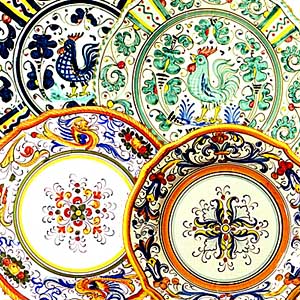
|
|
| ROMA - THE ETERNAL CITY |

/www.italyguides.it/us/roma/rome_italy_travel.htm
|
Rome
is one of the most popular travel destinations in Italy
and is a living museum of history, is a vibrant and lively
city with reminders of its past everywhere. In Rome you
will encounter ancient monuments, medieval and Renaissance
buildings and fountains, and great museums. Rome is the
capital of modern Italy and boasts many fine restaurants
and cafes, good nightlife, and lively steets and squares.
Although Rome is a huge city, its historic center is small.
The Vatican Museum is the largest museum complex in the
world with over 1400 rooms. The Vatican Museum includes
the museum, galleries with 3,000 years of art, the Sistine
Chapel, and parts of the papal palace. There is an astonishing
amount of art, including a room of works by Raphael. The
Pinacoteca Vaticana is Rome's best picture gallery with
many Renaissance works. |
| FIRENZE |
Florence
is famous all over the world for its unique beauties.
For many years Florence has been the cradle of culture
and art: many of the most famous artists of the Renaissance
were born there and thanks to them thousands of tourists
choose Florence for their holidays.
The artistic patrimony of Florence is between the more
important of the world. Famous Museums in Florence (Uffizi
Gallery, Pitti Museum, Museum of the Bargello, Archaeological
Museum, Museum of Modern Art, Museum of the Work of the
Dome). Large Parks and Gardens in Florence (Park of the
Cascine, Garden of Boboli, Garden of the Iris). The Monuments
in Florence constitute an artistic complex between the
more important to the world: the Baptistry (with the gold
doors by the Ghiberti and Andrea Pisano), the Fortezza
da Basso, the Giotto Bell Tower, the Hospital of Innocenti.
Important Churches in Florence: the Dome (or Santa Maria
del Fiore) with the immense cupola of the Brunelleschi
and the bell tower of Giotto, Pietà di Michelangelo,
the church of Santa Croce, in which we found the rip of
Machiavelli, Michelangelo, Galileo Galilei, Alfieri, Foscolo
and Rossini, the church of San Lorenzo, the church of
Santa Croce, the church of Santa Maria Novella. Florence
is rich of great work and Palaces in Florence like the
Palazzo Vecchio, the loggia dell'Orcagna, the Spedale
degli Innocenti of Brunelleschi, the Palazzi Medici, the
Palazzo Pitti and the Uffizi (by the Vasari with the famous
Uffizi Gallery), the Ponte Vecchio with the double row
of little old shops, from the 1500 exclusive rights of
the orafi.
|
|
| SIENA |
 |
In
scenic hill country just 55 kilometres south of Florence
this picturesque well-preserved medieval town lies in
the right in the middle of the Tuscany wine region. A
bitter competitor with Florence for much of its history
Siena is a treasure trove of art pageantry and architecture.
Inhabited continuously for over a thousand years, Siena
flourished in the Late Middle Ages when the merchant oligarchy
known as "the Nine" spent vast sums in order
to create the most beautiful and impressive city in Tuscany.
The many churches, palaces and military fortifications
which survive from this period bear witness to the magnificence
and sophistication of Sienese civilization. Most interesting
are the wonderful black-and-white Gothic Duomo (don’t
miss the magnificent Bernini statue of Mary Magdalene
hidden away in a niche or the dazzling mosaics on the
floor), the Palazzo Pubblico (for its impressive frescoes)
and the Torre del Mangia you can climb for a nice view
over the city.
If you’re there at the beginning of July or in
the middle of August try not to miss the world-famous
the Palio . A tradition dating from the Renaissance it
takes place in the Piazza del Campo a marvelous shopping
plaza in the shape of a half-shell whose circumference
is topped on race day with a layer of dirt to create a
track. |
|
| |
|